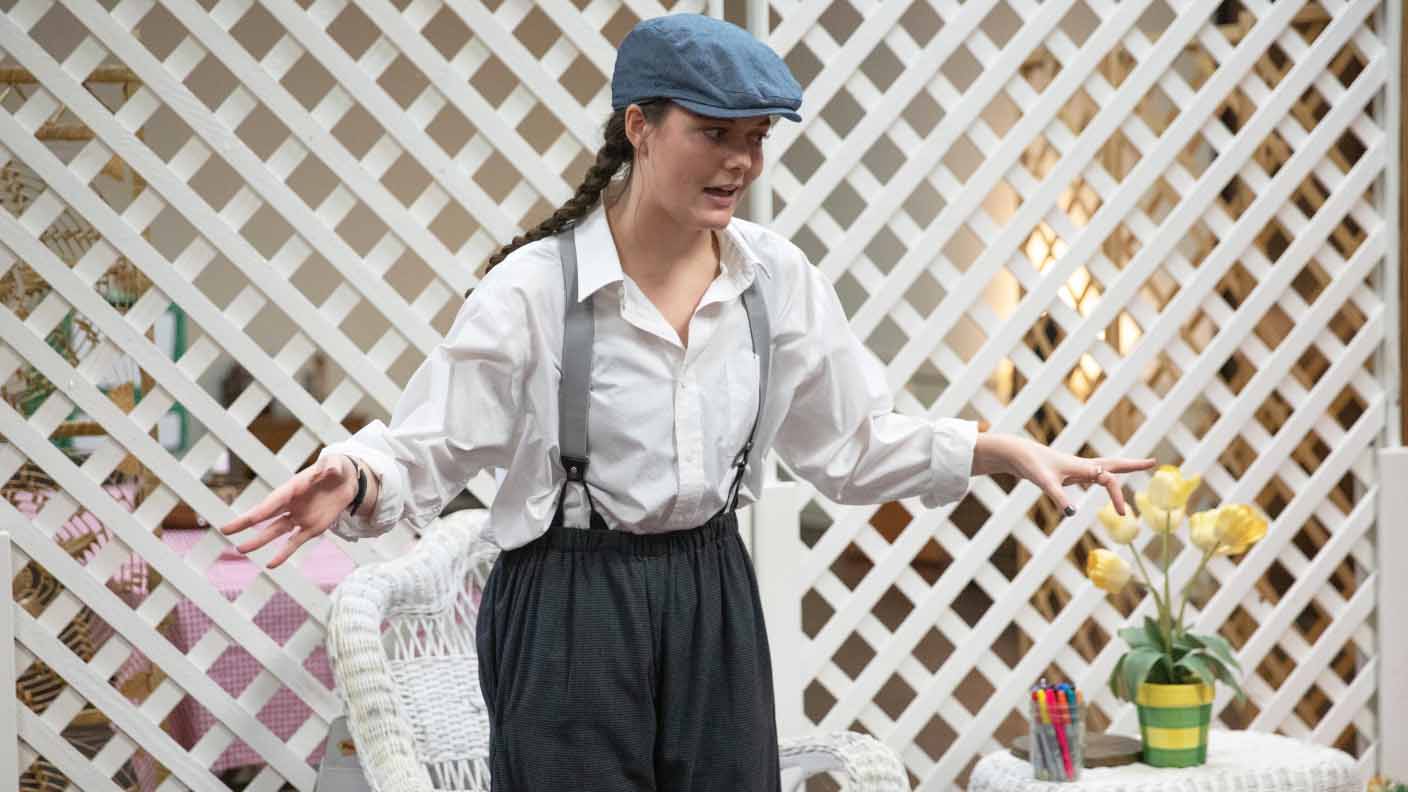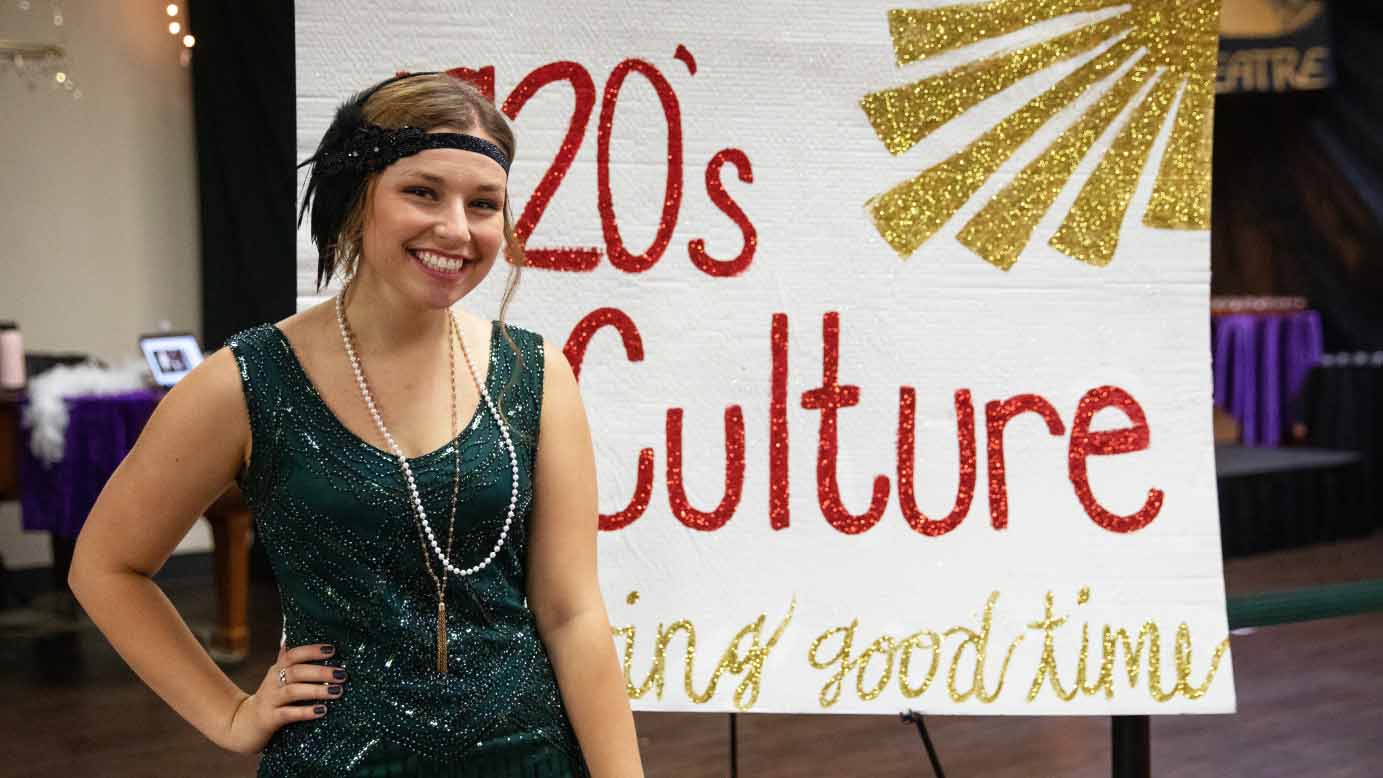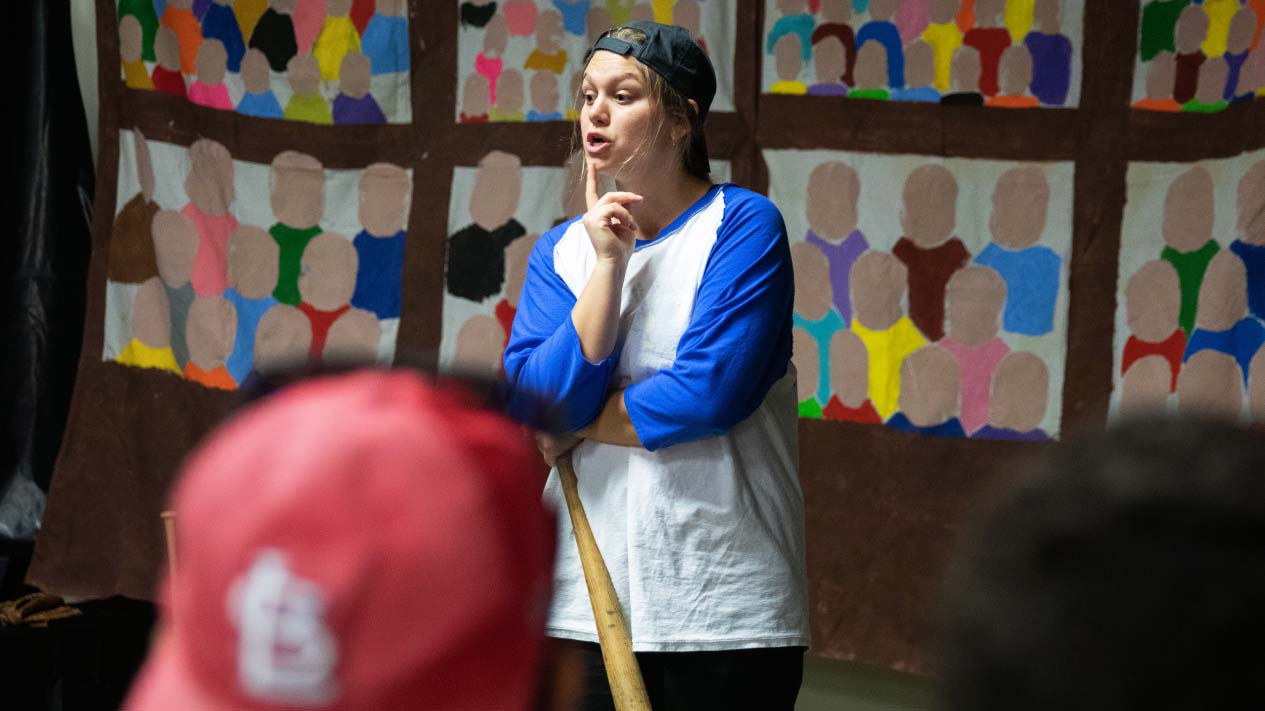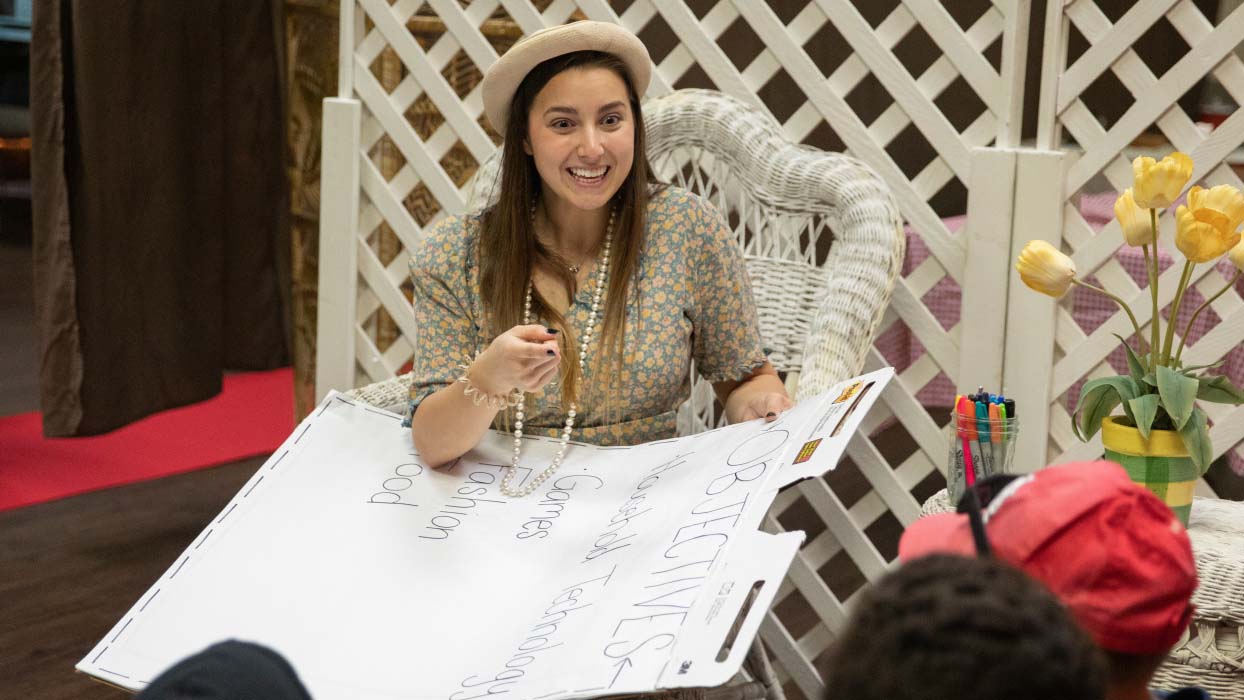OBU Teacher Education Students Host Interactive Children's Museum Oct. 29
November 3, 2021
Teacher education students at OBU hosted an interactive children’s museum Oct. 29 on the University’s campus in Shawnee. Fifth grade students from Sequoyah Elementary in Shawnee attended the event, which was held on the second floor of the Geiger Center.
The theme for the museum was “One Hundred Years: A Historical and Cultural Study of the 1920s.” Teacher education students in the social studies methods course created the living history museum, using hands-on experiences to teach the elementary students about life in the United States in the 1920s.
The social studies methods course is taught by Dr. Jeanne Akin, Mary A. White Professor of Education. Each fall and spring, she challenges students in the course to design and create interactive and engaging displays using only materials available to the average educator. This was the 44th biannual interactive children’s museum created by her classes.
“Through this project, my students practice pedagogical, collaborative and creative skills,” Akin said. “They develop not only a passion for social studies, but also a sense of responsibility and an understanding of the power that comes from sharing that knowledge with children.”
This year’s museum featured four main segments of life in the 1920s: issues, home life, culture and technology.
The “Issues of the 1920s” area of the museum was designed and run by Devyn Jones, Emma Melot and Lindsay Sigman. The display consisted of American flags, voting booths, a mock-up of the National City Bank of New York and even hospital beds. The historical topics covered in this area consisted of polio and the Boston City Hospital, women’s suffrage and voting rights, and the stock market crash of 1929.
With all of these lessons, the fifth grade students from Sequoyah Elementary School were able to interact as they learned. For instance, when learning about polio, students each received colored cards at the beginning of the lesson without knowing their meaning. After learning about polio, they were told that one color of cards represented health, while the other represented polio, demonstrating how common polio was in the 1920s. Likewise, with the voting rights segment, the children were able to cast ballots in voting booths, and in the bank portion, they were taught about how the stock market crashed using candy instead of money to illustrate what happened.
The “Home Life of the 1920s” section was created and run by Katie Bowers, Sarah Dean and Anika Wulliman. The display consisted of a replica of a 1920s home with old photos, furniture and even a kitchen modeled after the 1920s home. In this area, children learned about the historical topics of family dynamics, what the average family of the 1920s wore, what they ate and more.
The “Technology of the 1920s” division of the museum was designed and run by Anita Claxton, Camryn Jensen and Mackayla Wright. The display consisted of typewriters, photos of cars, a 1920s radio, blueprints of refrigerators and more. The historical topics surrounding the technology of the 1920s consisted of Ford industries and automobiles; new inventions such as typewriters, coffee pots, and cameras; and the establishment of an assembly line for manufacturing.
In this section, students were able to interact and learn by using a real typewriter. They were also able to witness the effectiveness of an assembly line by first trying to build a car with candy by themselves, then by working together to build many cars in an assembly line.
Jensen believes she and her fellow teacher education students learned valuable lessons from creating the interactive children’s museum.
“I think the main thing I learned is that going big and extravagant isn’t always necessary, but it’s worth it,” she said. “The students really got to feel a part of the culture of the 1920s. It wasn’t just something they learned about, but they could experience it in a way. Students need those experiences to really learn and grow, which is so cool to be a part of.”
The “Culture of the 1920s” section of the museum was created and run by Sarina Brothers, Ivanna Covarrubias and Hannah Ellis. The display consisted of a baseball field complete with a crowd, a Wrigley Field sign, bases and a student portraying Babe Ruth; a stage with flapper dancers modeled after the Egyptian Theatre; and a red carpet leading to a theatre with the Hollywoodland sign shining brightly.
The historical topics and lessons covered in this section consisted of learning about baseball players such as George Herman “Babe” Ruth and Leroy Robert “Satchel” Paige. Students also learned to dance the Charleston and learned about Hollywoodland along with famous actors of the day like Charles “Charlie” Chaplin, Greta Garbo and Ethel Waters.
Jensen commented on how she hoped the elementary students learned from the experience.
“Personally I hope that the kids saw how a society can grow and develop,” she said. “There will be new inventions, new discoveries and cures. We can have hope that there will be good things coming. We couldn’t share directly about what God has done, but I want them to see that they have the potential to change the world through faith and setting their minds to it.”
Jensen believes this experience will benefit her in her future career as a teacher.
“I think that this experience will make me a better teacher because it gives me the ability to think beyond the worksheets and day to day work,” she said. “It makes me want to be more interactive, more excited and more project based in my teaching. My students are not going to be ones that just watch a PowerPoint and do a worksheet. I want them to experience and love learning.”
Learn more about the Henry F. McCabe Family School of Education at OBU.



